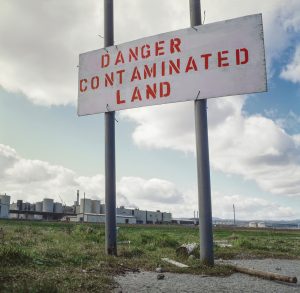
Legislation to support federal, state, and local collaboration on redeveloping abandoned industrial sites contaminated by pollution or hazardous waste, passed the House on Thursday with overwhelming bipartisan support.
The U.S. Environmental Protection Agency (EPA) estimates that there are more than 450,000 so-called brownfields across the nation with the potential to spur local economic development and create jobs. These sites, such as abandoned commercial buildings and factories or closed gas stations, are now languishing unused and in poor condition. The bill would reauthorize and improve EPA’s Brownfields Program.
The House approved the measure, the Brownfields Enhancement, Economic Redevelopment, and Reauthorization Act of 2017, H.R. 3017, by a 409-8 vote. The House Committee on Energy and Commerce and the Committee on Transportation and Infrastructure considered and approved the bill before it moved to the full House.
Energy and Commerce Committee Chairman Greg Walden (R-OR) addressed the program’s benefits for local economies, including communities in his district.
“My home state of Oregon has a very active brownfields program and we’ve seen some great success in my district,” Walden said. “Last year in The Dalles, Google broke ground on an expansion to their data center on 26 acres of former mill land that was cleaned up under this program – a $600 million investment expected to create 50 new jobs.”
Walden added, “In my hometown of Hood River, the Port of Hood River just finished a brownfields cleanup of another former mill site, opening over 12 acres of land for future business opportunities in the area.”
Energy and Commerce Environment Subcommittee Chairman John Shimkus (R-IL) pointed out that the bill’s tremendous House support speaks to the program’s benefits.
“The brownfields program on average, leverages over $16 in private investment for every federal dollar spent and leverages 8.5 jobs for every $100,000 of brownfields funds expended on assessment and cleanup,” said Shimkus. He added that the program “is uniquely positioned to protect the environment and spur the economy. You can tell that from the broad bipartisan support H.R. 3017 enjoys.”
H.R. 3017 cosponsor U.S. Rep. John Katko (R-NY), noted that communities across Central New York that have been impacted by industrial pollution have benefited from the EPA Brownfields Program.
“With this measure passed through the House, we are one step closer to ensuring industrial sites in our community and across this country are preserved and revitalized,” Katko said.
Katko had authored legislation that was included in the comprehensive bill to reauthorize the Brownfields Program from 2018 through 2022. Katko, a member of the Transportation and Infrastructure Committee, had introduced the bill with Rep. Elizabeth Esty (D-CT) earlier this year.
Lawmakers also stressed that brownfields concern all Americans.
“Every single congressional district has at least one brownfields site, and this bipartisan bill will help put those idle, unused properties back into productive use, providing economic and environmental benefits to communities across the country,” said Transportation and Infrastructure Committee Chairman Bill Shuster (R-PA).
Peter DeFazio (D-OR), ranking member of the Transportation and Infrastructure Committee, also noted the program’s proven record of success and cited its importance to mayors, county executives and state officials.
House Republican Conference Chair Cathy McMorris Rodgers (R-WA) said, “With brownfields in every Congressional district, this program impacts communities all across the country. We’ve seen the benefits right here in Eastern Washington.”
According to McMorris Rogers, Spokane’s Riverfront Park received a $600,000 Brownfields Program grant to help with environmental cleanup efforts.



